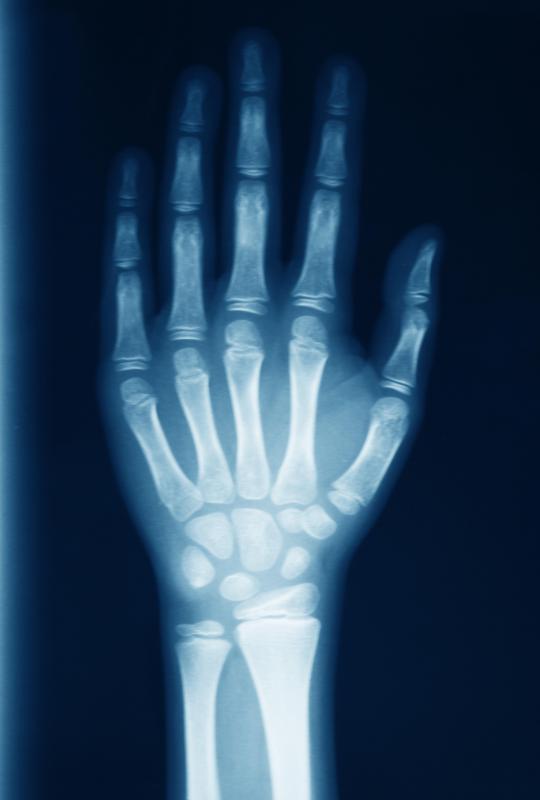At TheHealthBoard, we're committed to delivering accurate, trustworthy information. Our expert-authored content is rigorously fact-checked and sourced from credible authorities. Discover how we uphold the highest standards in providing you with reliable knowledge.
What is Pseudarthrosis?
Pseudarthrosis is the abnormal movement of a bone that has been fractured and has not healed properly. The term "pseudarthrosis" stems from the Greek words pseud, meaning "false," and arthrosis, which means "joint." It is often referred to as nonunion or simply a false joint.
Most pseudarthrosis results from improper healing after traumatic injury or fusion surgery. It can also occur as the result of a growth abnormality, usually during the first 18 months of life. This is known as congenital pseudarthrosis, and it can happen in any bone but most commonly occurs in the tibia, the smaller of the two bones of the lower leg. It is also common in the radius, one of the bones of the wrist.

There is usually pain involved in pseudarthrosis, the result of the two fragments of bone rubbing together. There can also be no pain at all, usually in the case of a slight fracture or post-surgery, and it is only found when a scan, either specialized X-rays or a computed tomography (CT) scan, is performed. These are often performed after fusion surgery to make sure there has been proper healing if there is no obvious abnormal movement noted.

There are several causes of improper healing that cause pseudarthrosis. These are primarily seen after surgery is done to fix an already damaged area. They can be the result of the hardware used in the fusion coming loose, infection or simply poor wound healing. Smoking, diabetes, and/or heart disease can be issues that cause poor health and lead to pseudarthrosis as well. In the case of a fracture, pseudarthrosis is usually caused by poor healing ability. In congenital psuedoarthrosis, there is an underlying disease factor that is causing the problem.
Pseudarthrosis is treated in several ways: internal fixation, external fixation and bone grafting. Often, it is a combination of the three. In the case of congenital pseudarthrosis, the underlying disease is also addressed, if possible.

Internal fixation is the use of screws, plates or rods to hold the bone together. This is often combined with bone grafting to help the bone heal faster and more efficiently. Bone grafting consists of taking bone from elsewhere, usually the hip, and placing it in the fracture. It there is an infection, which is commonly a problem, it must be cleared first.

External fixation uses an external apparatus to hold the bone together and compress it. The most commonly used apparatus is one developed by an orthopedic surgeon, Gavril Abramavo Ilizarov, which is simply named an Ilizarov apparatus. It can be used in conjunction with bone grafting and internal fixation, but it is preferably used alone, because the other two methods either have a risk of infection or the fracture is simply too severe to be operated on internally.
AS FEATURED ON:
AS FEATURED ON:

















Discuss this Article
Post your comments